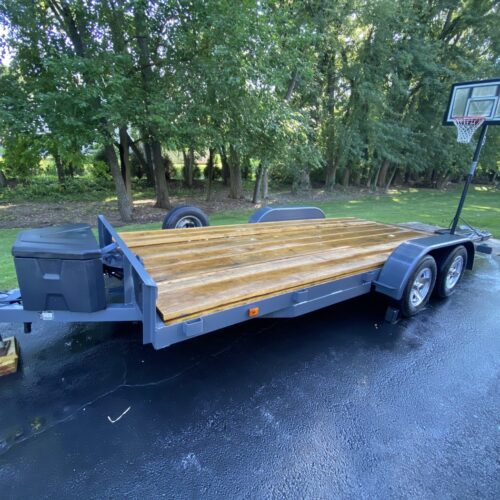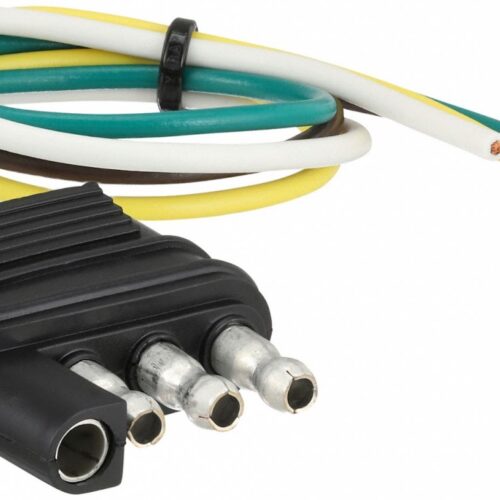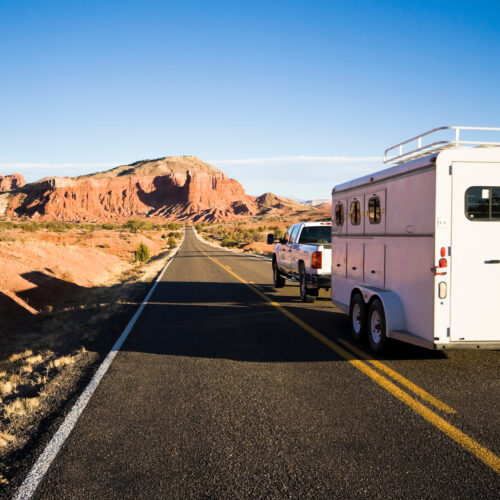California’s diverse landscapes and scenic highways make it a top destination for road trips and trailer adventures. But before you hook up your trailer and set out, it’s essential to be aware of the state’s specific trailer towing laws to ensure both safety and compliance. Here’s everything you need to know about towing a trailer in California.

Trailer Lighting and Reflector Requirements
California law mandates that trailers be equipped with specific lighting and reflectors to enhance visibility and safety on the road:
- Reflectors: Every trailer must have reflectors to improve visibility, especially at night or in low-light conditions.
- Tail Lights: Functional tail lights are required to signal the presence of the trailer to other drivers.
- Brake Lights: Brake lights must be operational to indicate when the towing vehicle is slowing down or stopping.
- License Plate Lights: The trailer’s license plate must be illuminated, making it clearly visible at night.
- Signal Lights: If the trailer blocks the tow vehicle’s signal lights, the trailer must have its own set of signal lights to indicate turns and lane changes.
- Clearance Lights: Trailers that are over 80 inches wide must have clearance lights to mark the trailer’s outer edges, helping other drivers gauge its width.
While most trailer manufacturers comply with these requirements, it is ultimately the trailer owner’s responsibility to ensure that all lights and reflectors are functioning correctly before setting out on the road.
Weight and Size Regulations
In addition to lighting, California has specific rules regarding the weight and size of trailers:
- Weight Limits: The maximum allowable weight for a trailer depends on the type of hitch and the towing vehicle. It’s important to ensure that your towing setup complies with the Gross Vehicle Weight Rating (GVWR) and Gross Combined Weight Rating (GCWR) specified for your vehicle and trailer.
- Length Restrictions: The total length of the tow vehicle and trailer combined cannot exceed 65 feet. For trailers alone, the maximum length is 40 feet.
- Width Limits: The maximum allowable width for trailers in California is 102 inches, excluding safety devices like mirrors and lights.
- Height Restrictions: The maximum height for a trailer, including the load, is 14 feet.
Braking Requirements
California law also requires that trailers over a certain weight have their own braking systems:
- Trailers Over 1,500 Pounds: Trailers weighing more than 1,500 pounds must have brakes on at least one axle.
- Breakaway System: Trailers over 3,000 pounds must be equipped with a breakaway system that automatically applies the brakes if the trailer becomes detached from the tow vehicle.
- Emergency Brakes: It’s also advisable, though not always required, to have a system in place that can stop the trailer in case of a brake failure.
Registration and Licensing
Before towing a trailer in California, ensure that:
- Trailer Registration: All trailers must be registered with the California Department of Motor Vehicles (DMV). The registration process includes paying fees and obtaining a license plate for the trailer.
- Driver’s License Requirements: Depending on the weight of the trailer, you may need a specific class of driver’s license. For most trailers, a standard Class C license is sufficient. However, if the combined weight of your vehicle and trailer exceeds 26,000 pounds, a commercial Class A or Class B license may be required.
Additional Considerations
- Safety Chains: California law mandates that trailers be equipped with safety chains that are strong enough to hold the trailer if it becomes disconnected from the hitch.
- Mirrors: Tow vehicles must have mirrors that provide a clear view of the road behind the trailer. If your trailer is wider than the tow vehicle, extended side mirrors are necessary.
- Speed Limits: In California, vehicles towing trailers are subject to a maximum speed limit of 55 mph, regardless of the posted speed limit for other vehicles.
Final Checks Before You Hit the Road
Before you start your journey, take a few moments to double-check the following:
- Lighting: Ensure all lights, including tail, brake, signal, clearance, and license plate lights, are functioning correctly.
- Brakes: Test the trailer’s brakes to ensure they’re working properly.
- Tires: Check the tire pressure and condition of both the tow vehicle and the trailer.
- Connections: Verify that the hitch, safety chains, and electrical connections are secure and functioning.
By following these guidelines and ensuring your trailer meets California’s legal requirements, you can enjoy a safe and stress-free towing experience on the state’s beautiful highways. Happy travels!




